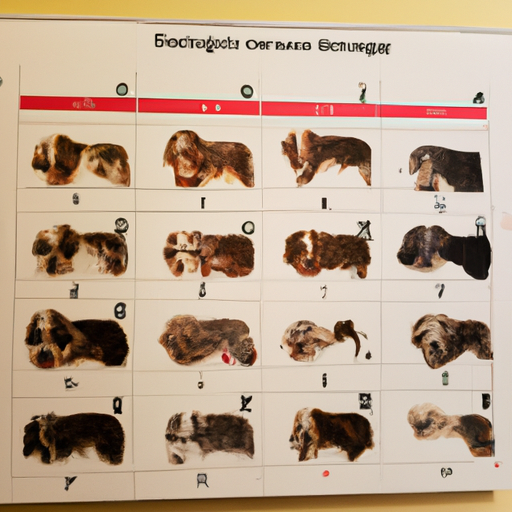Understanding Your Dog’s Heat Cycle
As a dedicated caregiver, it’s important that you understand your dog’s heat cycle. Dogs usually experience their first heat cycle around six months of age, but the timing varies depending on the breed and size of the dog. During this phase, they become receptive to mating and can get pregnant.
The heat cycle comprises four stages:
-
Proestrus: The initial stage that lasts around 9 days. During this period, you might notice some physical changes in your dog like swelling of the vulva and a bloody discharge.
-
Estrus: This is the fertile phase when your dog can conceive. It lasts for about 9 days, but it can be as short as 3 days or as long as 21 days.
-
Diestrus: This phase lasts around 60 days, whether or not your dog is pregnant. Physical signs of heat will disappear, and your dog’s behavior will return to normal.
-
Anestrus: This is the resting stage that lasts between heat cycles.
Frequency of Heat Cycles in Dogs
Typically, dogs go into heat twice a year, or every six months. However, this frequency can vary widely. Some dogs may go into heat only once a year, while others might have three or four cycles a year.
Factors that can influence the frequency include:
-
Breed: Smaller breeds tend to have more frequent heat cycles than larger ones.
-
Age: Younger dogs may have irregular cycles, but these usually normalize as they grow older.
-
Health: Certain health conditions can affect the frequency of heat cycles.
Recognizing Signs of Heat in Dogs
Being able to recognize the signs of heat will help you manage your dog’s cycle better. Some of the signs include:
- Swelling of the vulva
- Bloody or straw-colored discharge from the vulva
- More frequent urination
- Changes in behavior such as increased affection or aggression
If you notice these signs, it’s likely your dog is in heat.
Managing Your Dog’s Heat Cycle
When your dog is in heat, it’s important to manage her cycle carefully. Here are some recommendations:
- Keep her indoors as much as possible to avoid unwanted pregnancies.
- Use doggy diapers to manage the discharge.
- Don’t leave her unsupervised around male dogs.
The Importance of Spaying Your Dog
If you’re not planning to breed your dog, consider getting her spayed. This procedure not only prevents unwanted pregnancies but also eliminates the risk of certain diseases, such as uterine infections and breast cancer.
| Benefits of Spaying | Risks of Not Spaying |
|---|---|
| Prevents unwanted pregnancies | Risk of unwanted pregnancies |
| Reduces the risk of certain diseases | Increased risk of certain diseases |
| Eliminates heat cycles | Regular heat cycles |
Frequently Asked Questions
Q1: At what age should I get my dog spayed?
A: Vets usually recommend spaying before the first heat cycle, around six months of age.
Q2: Can a dog get pregnant during her first heat cycle?
A: Yes, a dog can get pregnant during her first heat cycle.
Q3: How long does a heat cycle last?
A: A heat cycle lasts about 18-21 days, but only part of that time is fertile.
Q4: Is there a way to prevent my dog from going into heat?
A: The only way to prevent a heat cycle is through spaying.
Q5: Can I walk my dog when she’s in heat?
A: Yes, but avoid areas with other dogs and always keep her on a leash.
With a little knowledge, patience, and care, you can navigate your dog’s heat cycles confidently and ensure her health and well-being.



